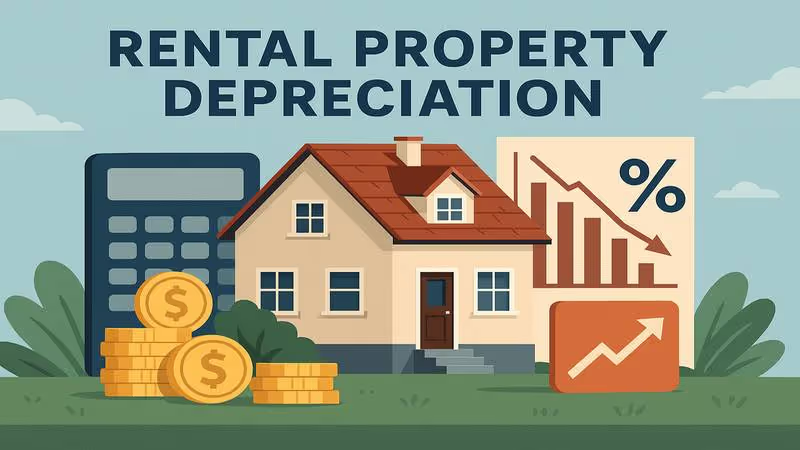Tax Smart Strategies for Exiting Your Rental Real Estate Investment
Rental real estate can be a very tax-advantaged investment. But once the investment has run its course, how you exit a property — whether through a sale, exchange, or inheritance — will ultimately determine how much of your gain you keep and how much goes to the IRS. Smart investors don’t just measure their ROI when they buy; they plan for the tax impact when they sell.
Let’s walk through the three main concepts that impact the tax consequences when selling a rental property — depreciation recapture, capital gains, and adjusted basis — and then look at three planning strategies to help minimize the hit.
Depreciation Recapture
Every year you own a rental, you’re allowed to deduct depreciation — essentially writing off part of the property’s cost over time. The flip side is that when you sell, the IRS wants some of those deductions back. This is called depreciation recapture, and it’s taxed at ordinary income rates. It reverses the tax benefits you’ve accumulated all in the year of sale.
Capital Gain
If you sell for more than what you originally paid (plus improvements), the extra profit is your capital gain. That gain is taxed at capital gains rates, generally 15–20% federally, plus any state tax.
Adjusted Basis
Your adjusted basis is the starting point for calculating both depreciation recapture and capital gain. It begins with what you paid for the property, plus improvements, minus the depreciation allowed over the years. Importantly, the IRS reduces your basis whether or not you actually claimed the depreciation — meaning you can’t skip it to avoid the recapture later.
Planning Options
1. Sell and Pay the Tax
Sometimes the simplest option is to sell, take your profit, and pay the tax. If that’s the route you’re taking, it’s wise to do a tax projection ahead of time. You may have options to soften the blow — for example, by maxing out 401(k) or retirement contributions to offset the added income in that year or applying previously disallowed losses or credits.
2. Defer with a 1031 Exchange
If you plan to reinvest in another property, a 1031 Exchange lets you defer the tax and roll your gain into the next property. Done correctly, it feels like your sale and purchase are one transaction in the eyes of the IRS. Some key rules:
- Both properties must be U.S. real estate.
- You have 45 days to identify the replacement property and 180 days to close from the sale of the first property.
- Proceeds must be held in escrow by a third party.
- Receiving cash or other non-like-kind property (“boot”) triggers taxable gain on that non-like-kind property.
- Vacation homes generally don’t qualify unless converted to rentals first.
- You may buy the replacement property before selling the old one through a “reverse exchange”. The 45-day and 180-day windows still apply but in reverse.
This strategy is paperwork-heavy and best reserved for larger sales, but it can save substantial tax if you want to stay in the rental real-estate game.
3. Step-Up in Basis at Death
Finally, there’s the estate planning route. If you hold the property until you pass away, your heirs receive a step-up in basis — meaning the property’s basis resets to its fair market value at the date of death. That can wipe out years of appreciation for tax purposes. If your heirs sell shortly after, they may owe little or nothing. Or they can keep the property with a fresh basis going forward.
Final Thoughts
Exiting a rental property is about more than just finding the right buyer — it’s also about planning for the tax bill that follows. Whether you sell, exchange, or hold until death, knowing the rules ahead of time helps you keep more of your money.
As always, consulting with a tax professional is the best way to map out which strategy works for your situation. If you’re already a client, reach out to your contact — we’ll be glad to walk through your options. If you’re not yet a client, call us at 724.934.4880 and let’s talk about how we can help you plan your exit wisely.













